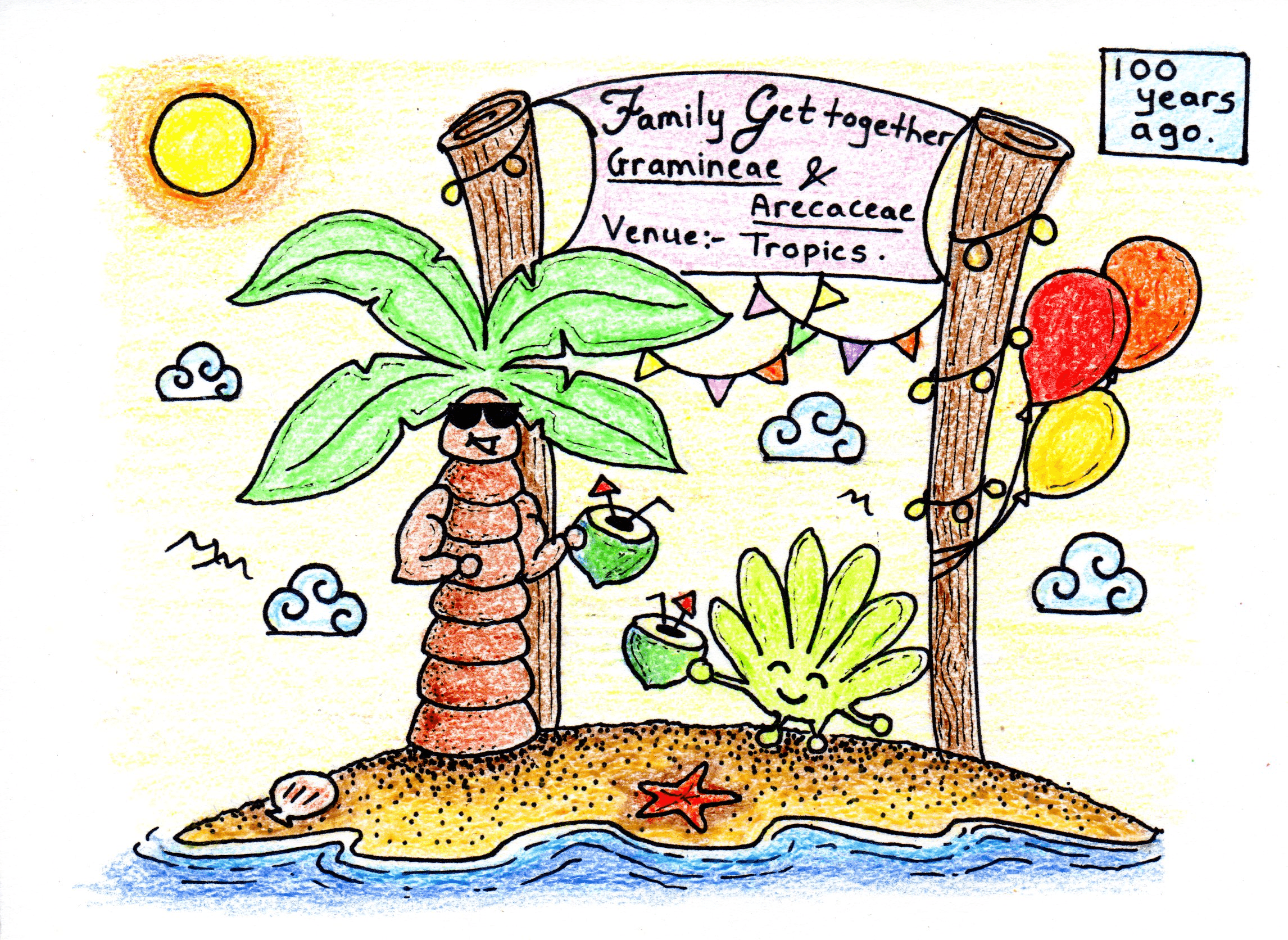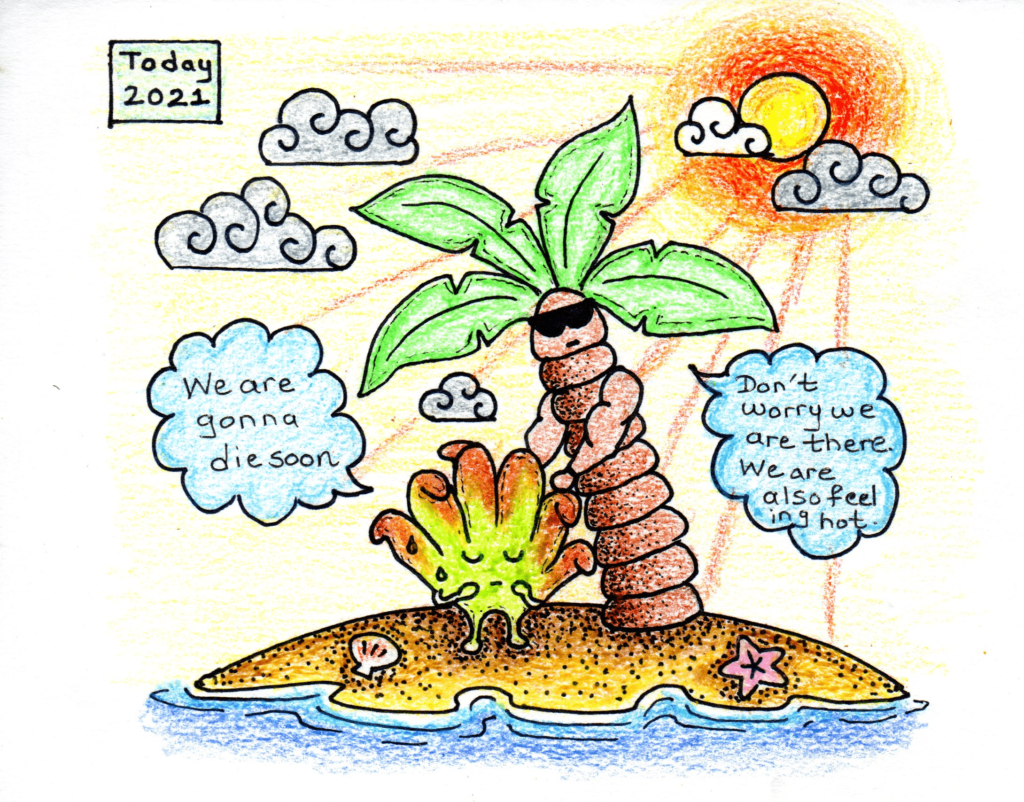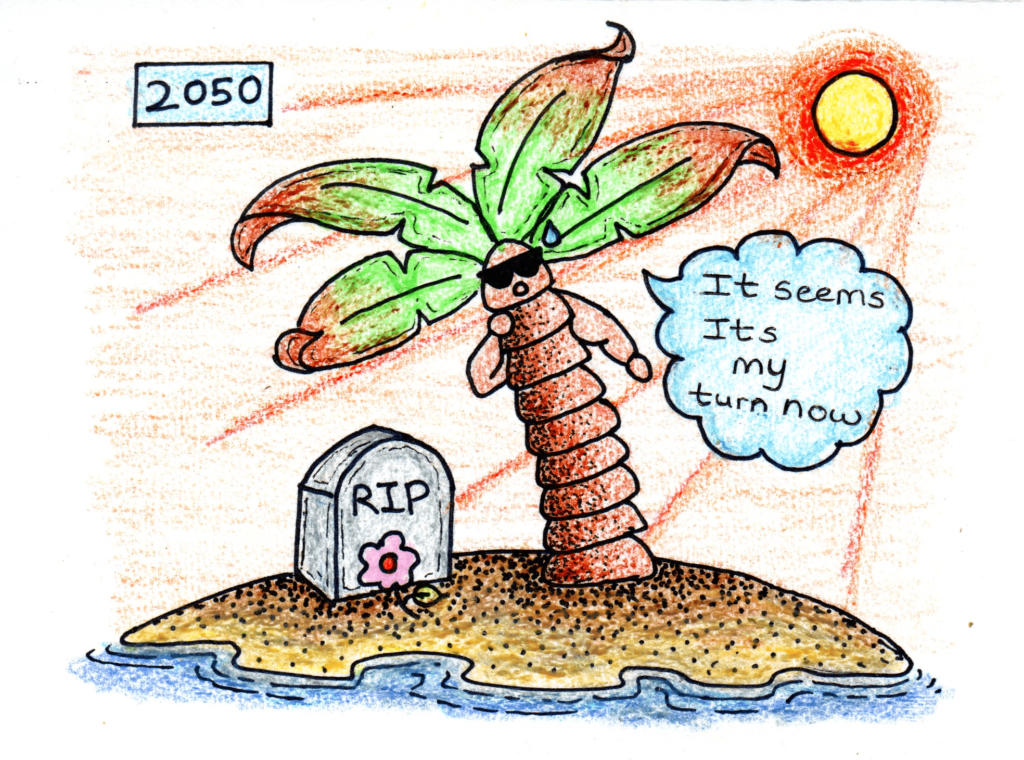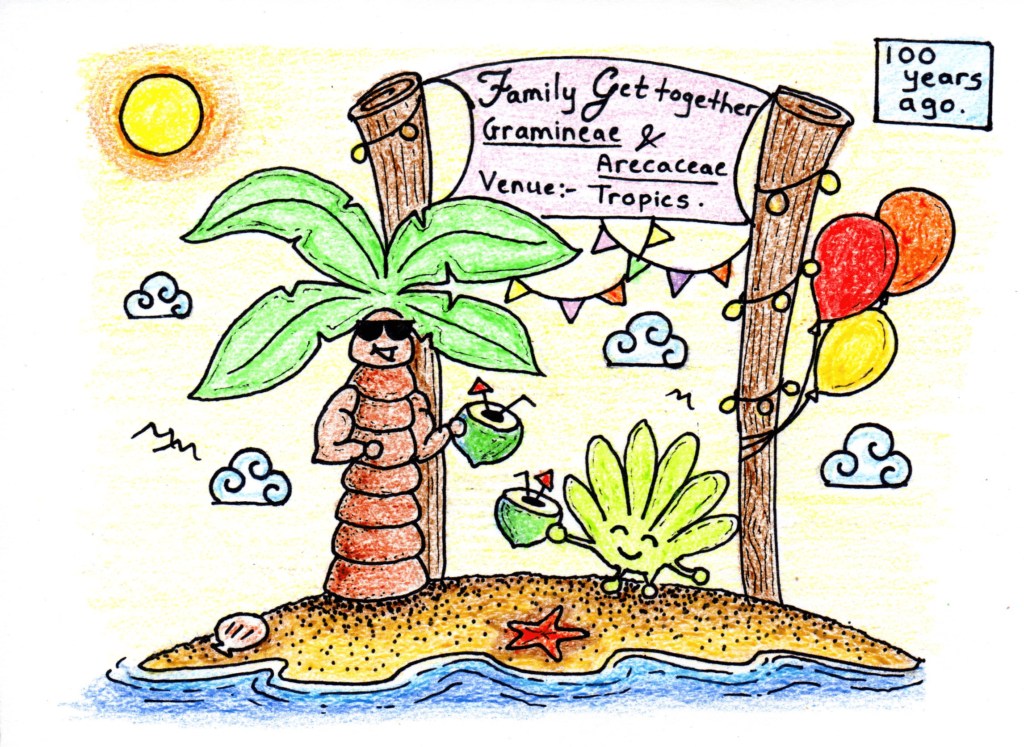A few hundred years ago, there was a beautiful landscape somewhere in the tropics of the Earth. Rich with flora and fauna, it was a paradise. Different plant families co-existed there for years. But we will talk about two of them, the Gram family (Gramineae = grasses) and the Areca family (Arecaceae = Palms). Both these families co-existed and thrived for generations.
The Grams were known to be a very smart and dynamic family. Though they were not the ones to bulk up, they grew faster than anyone, reproduced at a higher rate and spread all over the landscape within weeks. Carbon being their favourite food, they would meal on it faster than anyone. They would help the Earth bring back carbon from the atmosphere to the biosphere at a fast rate (Scientific term = Fast Resource Acquisition). Rains always brought delight to them. With enough water in the soil and carbon (in the form of CO2) in the atmosphere, the rains were synonymous with a Christmas feast for them. But they dreaded summer. With their feeble body, the intense heat was unbearable for them. Their physiology was not meant to withstand high temperatures and continue photosynthesis. But they had a strategy! They used to make seeds just at the end of the wet season. The entire dry and hot season, they would stay dormant. Just before the rains began, they would grow again from the seeds they prepared last season. This still proves to be one of the greatest species survival strategies in the plant kingdom.


The Arecas, on the other hand, had a very different lifestyle. They were the bodybuilding kind, very strong and muscular. But they would grow and reproduce at a slower rate compared to the Grams. Though they were spread all over the landscape, they were outnumbered by the Grams. Unlike Grams, they were comfortable with any season. An intense heat would not scare them. They also helped the Earth bring carbon back to the biosphere from the atmosphere but at a slower rate (Scientific term = Slow resource acquisition). But does this mean they were less helpful to the Earth? Not at all. With Grams gone during the dry period, a part of carbon they brought back to Earth would go back to the atmosphere with the help of soil microbes (Scientific term = Soil Microbial Respiration). But the Arecas would hold onto the carbon they collected. They guarded it in their body and made themselves strong! This helped to keep the carbon back on Earth instead of emitting it into the atmosphere. During an intense dry season, they would stand alone while the Grams stayed dormant in the form of seeds.
When it comes to global warming, both these families were very helpful to Mother Earth. One would help reduce carbon from the atmosphere at a very high rate, and the other, though slow, would help it keep in the biosphere. Both were equally important. For years this perfect cycle – plants removing carbon from the atmosphere and volcanoes and soil microbes putting it back into the atmosphere – was taking place and successfully maintaining a good balance.

Years later, we humans started using too much of our brains. The industrial revolution started a new era called the Anthropocene. We started doing exactly the opposite of what plants were doing – putting carbon from the biosphere back into the atmosphere. At first, it was manageable. Plants had the Grams, who could bring it back much faster. But soon, our emissions accelerated at a rate that was too much carbon to remove from the atmosphere. And let us not forget, we started to convert hectares of forest and grasslands into barren lands to build civilisations. Soon, the Earth started to heat up due to higher accumulation of greenhouse gases in the atmosphere without our knowledge.
Today, we are experiencing the highest surface temperatures year after year. When it comes to intense heat, the Arecas had no problem. The Grams, too, had a strategy, but it was only limited to summers! Today, we sometimes experience high temperatures, even during rains or winter seasons. The Grams were not at all adapted to these new environmental conditions. For thousands of years, they were used to the beautifully crafted cycle by mother nature. We, humans, started to ruin it, and the Grams were facing its consequences. The Grams are extremely important for heterotrophs. Most of the herbivores feed on grasses. Wheat, sorghum, a basic part of our food, belong to the Gram family.


It is estimated that in the coming years, the temperatures will go on increasing. This will create harsher living conditions for the Grams, who are not temperature tolerant than the Arecas. The Grams are at risk of losing this fight. If they lose, the Earth will lose an important part of it. Herbivores feeding on it will face scarcity of food. In time, this will shrink the herbivore population, which will collapse the carnivore population as they feed on herbivores. This is a disaster, isn’t it? This is termed as Trophic Cascade, where if one trophic level is disturbed, it will cause catastrophic consequences to the entire food chain. If the Grams lose the fight, there will not be a plant family left that is good at removing carbon from the atmosphere at such a fast rate. This, in time, will lead to more carbon in the atmosphere and intensify global warming! Do you think the Arecas are invincible? No! They, too, have a threshold beyond which they cannot withstand high temperatures. Thus, after the Grams, it will be the Arecas next suffering and eventually dying forever. This, now, does sound like a spiral of death. It’s as if we humans are playing Zenga, removing pieces of an intricate and well balanced Earth System. Every extinct species resembles a piece of Zenga set removed. And when we keep the removed piece above, stress on the lower levels increases. That increase in stress is nothing but the cost of extinction. We are getting closer to that last piece day by day, which will result in the collapse of an entire ecosystem. Let’s not forget; we are one of the pieces from that set.
Disclaimer: There are many other plant families like the Grams, but for the story’s sake, I used Gramineae as the representative to those families. Here, by the Grams, I only mean the grasses with an annual lifecycle.
References
Pawar, R. (2020). Relationship between thermal sensitivity and leaf thermotolerance in tropical plant
species. B.Sc. Thesis. Savitribai Phule Pune University, Pune.
Lagachu, H. (2020). Variation in temperature tolerance in grasses and palms, and their relationship with
leaf functional traits. M.Sc. thesis. Indian Institute of Science Education and Research (IISER) Pune
Author:

Rohit Pawar
Rohit is an ecologist who recently graduated with a bachelor’s degree in Biosciences from Savitribai Phule Pune University. He wishes to devote his life to ecosystem conservation. In his free time, he worries and overthinks about the biggest problems in the world, especially climate change. He thinks that we are 4 Elon Musks away from saving this planet.
Illustrator:

Dhaval Shejwal
Dhaval is currently pursuing his bachelors in Microbiology. Both science and art are his passions. Creativity keeps him going. Scientific data visualization and communication have become the need of time and necessity, as well to break the wall between a lab and home. According to him, “Art is a beautiful reflection of Science, there is art in science and science in art”.

